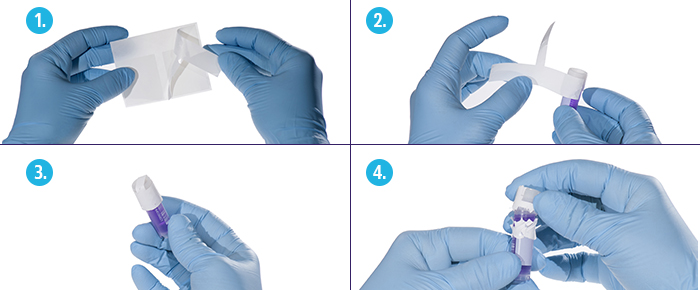
Tampering compromises your samples
Sample security is critical to both small and high-profile tasks, whether it’s samples generated during an experiment in the lab, evidence collected for forensic analysis to identify criminals, or tumor specimen containers sent to pathology for processing. You can clearly imagine how tampering with any of these samples might have disastrous consequences: mixing up samples in the lab could ruin a year’s worth of work, swapping one suspect’s blood sample with another might send an innocent man to jail, and opening a tube with a tumor specimen could jeopardize the integrity of the sample, requiring that patient to undergo another painful biopsy. Regardless of whether the labels are switched or the container itself is contaminated, tampering compromises your samples, resulting in potentially hazardous situations.
It happens more often than you think
Sample tampering can happen in almost any industry or work environment. One of the most high-profile cases of this involved the Russian Olympic team, who switched its athletes’ urine samples from its athletes, helping them test negative for performance-enhancing drugs. Drug testing labs also depend on untampered samples to accurately determine the drug levels of those that work for agencies where drug intake isn’t permitted or who participate in addiction rehabilitation programs. Other common places where sample tampering can occur include:
Forensic analysis – Blood samples, including blood taken from suspects or swabs performed at a crime scene and collected in evidence bags, must be secured and transported to testing facilities for analysis. To ensure that the chain of custody is maintained, these containers must remain visibly sealed, with no evidence of tampering. Any tampering would invalidate information that is normally used to properly assess a crime scene and/or identify potential victims and suspects.
Research facility – Research labs work with a variety of samples, tools, and equipment that must remain sterile and contamination-free prior to use, including cell lines, antibodies, tissue samples, and surgical tools. This includes cell lines that need to undergo long-term cryogenic storage in liquid nitrogen Dewars or biobanks that store patient tissue and blood samples in extremely low-temperature freezers. These samples must not be tampered with, as any contamination can ruin years of work. Moreover, early identification of contaminated samples, such as cell lines and primary cells, can save both time and money by reducing the risk of growing contaminated cells, only to finally realize days or weeks later that the original sample was compromised.
Clinical laboratories – Clinical labs may be asked to perform analyses on many types of samples, including blood samples, urine samples, and biopsies. Tampering with any of these samples means that patients could receive an inaccurate test result, altering their course of treatment and, ultimately, their quality of life. They may also need new samples to be taken for biopsies; this may be especially impractical, sometimes adding increased risk for complications and unnecessary pain or discomfort.
Clinical trials – The design of a clinical trial could benefit significantly from tampering prevention, as it may help with sample authentication, theft prevention, and protection against counterfeiting. Clean unopened samples are key to ensure that the appropriate drug is sent to the right drug arm, to indicate when the container is first opened and that the results that are sent to the doctors are accurate and usable. Sample tampering in clinical trials can skew or outright ruin results that are critical to years’ worth of expensive drug development.
Tamper-evident labeling can help prevent sample tampering
Tamper-evident labels and tape add a layer of protection to your samples by tearing into pieces upon any attempt to remove them. These types of labels are made to conform to the precise shape of either tubes, vials, or storage boxes, while tamper-resistant tape can also be used to cover larger containers. This makes any attempt to open the container visible and informs the container’s owner that someone has attempted to tamper with the samples. They are ideal for the secure storage and transportation of valuable or sensitive material, from biological specimens to hazardous or infectious viruses and bacteria. Regardless of your industry of interest, tamper-evident labels will provide an extra layer of security and help keep your samples from being compromised.
LabTAG by GA International is a leading manufacturer of high-performance specialty labels and a supplier of identification solutions used in research and medical labs as well as healthcare institutions.